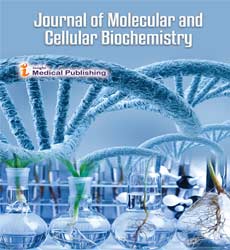The Mechanism of DNA Repair System
The preservation of genetic sequence information in living organisms is critical for life's survival. At the same time, mutagenesis is critical to its survival and evolution, while also contributing to cancer, some human diseases, and aging. DNA, the basic unit of inheritance, is known to be an innately reactive molecule that is highly vulnerable to chemical changes by both endogenous and external agents. DNA repair refers to the methods through which a cell detects and repairs damage to the DNA molecules that encode its genome. Normal metabolic activities, as well as environmental influences such as radiation, can induce DNA damage in human cells, resulting in tens of thousands of unique molecular lesions per cell every day. Both prokaryotic and eukaryotic organisms contain DNA repair pathways, and many of the proteins involved have been highly conserved throughout evolution. Cells, in reality, have evolved a multitude of methods to identify and repair the numerous types of DNA damage that might occur, regardless of whether the damage is generated by the environment or by replication errors. Because DNA is a substance that performs an active and vital function in cell division, DNA repair regulation is inextricably linked to cell cycle regulation. Cells go through a cycle that includes the G1, S, G2, and M phases, with DNA replication taking place in the S phase and mitosis taking place in the M phase. Checkpoint processes ensure that a cell's DNA remains intact during the cell cycle before allowing DNA replication and cell division to proceed. Failures at these checkpoints can result in a build-up of harm, which can lead to mutations. Exposure to UV radiation activates one of the main DNA Damage Responses (DDR). Solar UV radiation is classified into three types, with only UV-A and UV-B capable of penetrating the Earth's atmosphere. As a result, these two forms of UV radiation are the most concern to humans, especially as the ozone layer continues to deplete, causing larger levels of this radiation to reach the planet's surface. NER and photo reactivation aren't the only ways to repair DNA.
Open Access Journals
- Aquaculture & Veterinary Science
- Chemistry & Chemical Sciences
- Clinical Sciences
- Engineering
- General Science
- Genetics & Molecular Biology
- Health Care & Nursing
- Immunology & Microbiology
- Materials Science
- Mathematics & Physics
- Medical Sciences
- Neurology & Psychiatry
- Oncology & Cancer Science
- Pharmaceutical Sciences
